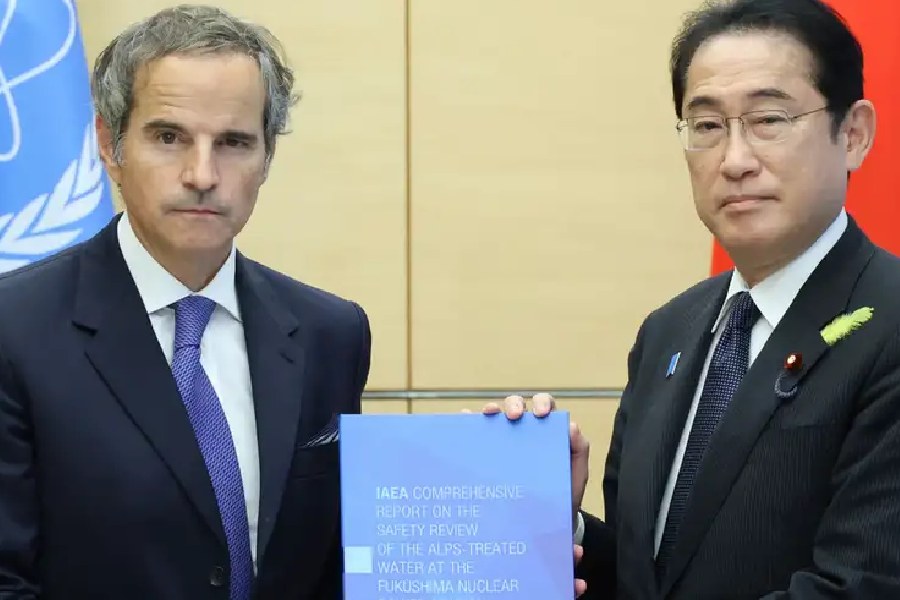Japan on Tuesday received approval from the UN's International Atomic Energy Agency (IAEA) for a plan to release treated radioactive wastewater from the damaged Fukushima nuclear plant into the ocean.
IAEA chief Rafael Mariano Grossi, who reached Japan on Tuesday for a four-day trip, met with Prime Minister Fumio Kishida to submit the nuclear watchdog's final report on the water release.
At a joint press conference with Foreign Minister Yoshimasa Hayashi earlier on Tuesday, Grossi said that the report marks "an important chapter" in the IAEA's work over the past two years.
Neighboring countries have raised concerns over the contentious plan, with Beijing being its most vocal critic. Local fishing unions have also voiced their opposition to the project.
Radiological impact 'negligible' — IAEA
The IAEA said in its report the plan was consistent with international safety standards and would have a "negligible radiological impact to people and the environment."
The report follows two years of work by agency specialists who reviewed the plan.
"This is a very special night today," IAEA chief Rafael Grossi told Prime Minister Fumio Kishida before handing him the agency's final report on the plan.
Grossi said that the agency would remain involved in the process before, during, and after the water releases.
During the meeting with Grossi, Kishida said that Tokyo would continue explaining the safety of the plan to both the Japanese people and the international community.
The project still requires final approval from Japanese nuclear regulator Tokyo Electric Power (Tepco). A date for the start of the implementation of the plan has not been announced.
What is Japan planning to do with the Fukushima water?
The Fukushima plant meltdown in 2011 — triggered by a devastating earthquake and tsunami — left Japan to have to deal with the water used to cool the pant's fuel rods.
Authorities have over the last ten since been treating the contaminated water which is being stored in almost 1,000 tanks.
But the storage is about to reach its capacity of 1.37 million tons — enough to fill 500 Olympic size swimming pools.
The water must be removed to make way for the plant's decommissioning and to prevent any accidental leaks.
As part of its plan, Japan intends to dilute the treated water and release it over 30 to 40 years with the help of a pipe extending around a kilometer from the east coast where the Fukushima nuclear plant is located.
How have Japan's neighbors responded?
Neighboring countries have expressed concern over the years about the risk to marine life and public health. China has been the staunchest critic of the water release plan.
On Tuesday, Beijing said through its embassy in Japan said the IAEA's report cannot be a "pass" for the water release and urged the plan's suspension.
Some fishing unions in Fukushima have also opposed the government's plan, fearing that customers will steer clear of their catches despite strict testing norms for the food from the region.
Several countries had banned some food products from Japan after the 2011 catastrophe. South Korea said it would continue its ban on certain food products, ahead of the IAEA report's release.
Japan has tried to assuage concerns over its plan.
"We will continue to explain the safety of the plan to release the treated water into the ocean to the international community, based on scientific evidence and with transparency," Hayashi said at Tuesday's briefing.
Grossi is also expected to visit South Korea, New Zealand and the Cook Islands to allay concerns overseas. He is also set to visit the Fukushima site to inspect some of the newly constructed facilities for the water release.










